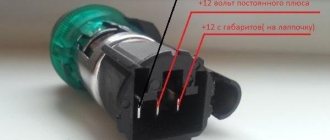A car battery case that functions as a thermal case will help protect not only from dirt and precipitation. But also from the influence of temperature conditions and resolve the issue in frosty conditions. When the temperature drops to -25 degrees, the problem of starting the engine becomes most pressing.
Some buy this device from dealers, while others make it themselves.
Thermal case concept
Until recently, no one could even think that it was possible to have a personal “coat” for a battery. Moreover, it was difficult to obtain suitable materials for the case.
However, scientific and technological progress is rapidly moving forward. And the emergence of new heat-resistant and comfortable bases for such a design has led to widespread adoption of this convenient idea.
The ability of a battery to recharge after standing in frosty conditions overnight is 10%. Therefore, it makes sense to prevent it from completely freezing. Whether your battery will cool down depends on the quality of the thermal case.
Winter operation
The main rule for using a battery in severe frosts is that the vehicle’s electrical system is in good working order. Before the onset of cold weather, be sure to check the integrity of the wiring - in particular you will be interested in the wires laid between the generator, battery and starter.
However, breakdowns in other places cannot be ignored, since even a minor power leak can lead to a complete discharge of the battery in winter. Also, caring for your battery in winter includes periodically cleaning the terminals from oxides and dirt accumulated on them. They should be treated with fine-grained sandpaper, and then coated with a thin layer of lithol or other grease that conducts electricity.
Close attention should be paid to the generator - the output voltage should be measured to determine whether it can be used in winter. The normal voltage generated by a car generator should reach 14.5 V, although 13.8 V is considered the minimum possible level
Video on how to measure voltage on a generator:
If this value is lower, you should expect damage to the battery, and with a lower value, the battery simply will not be able to charge normally. Check the tension of the generator belt as well, as slipping can cause insufficient charging in winter. Finally, inspect the appearance of the unit - signs of overheating, which appear in the form of spots on the metal, indicate that the generator will soon require serious repairs.
You also need to check whether the battery meets regulatory requirements. Many motorists ask what the density of the battery should be in winter? Experts say that the norm for any climatic conditions is 1.27, although in summer small deviations from it to a lesser extent are allowed.
Electrolyte density table, depending on ambient temperature
If the results of your measurement show a slightly lower density, you should add electrolyte, recharge the battery, and then recheck after a few days of intensive use of the vehicle. If it is impossible to restore the standard performance of the battery, it will have to be replaced.
In some cases, preparing a battery for winter involves insulating it - this method is used if the temperature can drop below -40 degrees. Only use non-flammable material that does not conduct current and will not cause a short circuit.
The best option is fiberglass, formed in the form of thin mats - it can be used to make an additional shell that protects the battery from the influence of temperature fluctuations. It is necessary to ensure that the battery terminals remain open and are accessible for inspection or maintenance at any moment.
If you succeed in increasing the density in the battery for the winter, you need to use a gentle mode of operation of the vehicle’s on-board electrical network in the future. Immediately after starting, try not to turn on any devices to reduce the load on the battery.
Turn on electrical consumers after the engine has warmed up
Even if the weather is not conducive to a comfortable stay inside the car, try not to turn on the heater fan, heated rear window and other devices in the first 3-5 minutes. To quickly warm up the engine and interior, install an auxiliary heater and preheater, which will help cope with this task without creating a significant load on the vehicle's electrical system.
Do you need a battery case in your car?
This device is optional, that is, it is not included in the required set of devices for the car. Each driver makes the decision to purchase it independently.
A number of different factors will influence this. Much depends on what climate zone you live in and under what conditions you operate your car.
Thermal case can protect the battery from dust, dirt and chemical effects of liquids on difficult routes. It will also prevent mechanical damage, but it will not protect the wires and heating elements.
Is it possible to do it yourself?
The battery case is a fairly simple product and is made from affordable, inexpensive materials. It is possible to make it yourself. There are a number of requirements for it:
- The use of flammable materials is prohibited.
- Do not leave seams or gaps through which cold air can freely penetrate (with the exception of technological openings for the exit of wires and fasteners).
- To fasten parts, you can use glue and tape (for attaching foil materials).
The most accessible materials for manufacturing at home are the following materials:
- Styrofoam. This is the cheapest material for insulation and is easy to work with. Measurements are taken from the battery, and foam sheets are cut according to them. The entire structure is carefully glued together, making sure that there are no gaps left. The battery is placed in the resulting foam box, tightly closing it with a specially fitted lid made of the same material.
- Folgoizol on polystyrene foam. Folgoizol is a modern insulating material that protects against increased heat loss. To enhance the efficiency of its operation, it is used in conjunction with polystyrene foam, with which it forms a “sandwich” of three layers: foil insulation + foam plastic + foil insulation. This achieves the maximum level of battery protection. The polystyrene foam is glued together, and the layers of foil insulation can be securely fastened with tape.
- Felt. This is another accessible material. A pattern is made from it according to the shape and size of the battery. To improve the protective properties, take several layers of felt and cover them with dense material. Velcro fasteners can be added to make working with the battery easier.
All thermal insulation devices have one drawback - they block the flow of heat from a running engine to the battery. Those. To prevent the battery from freezing, it must first be heated. If it is not insulated, then this is done due to the heat of the engine. With insulation it becomes more difficult to heat up. Here it would be appropriate to buy a heated thermal case - this is the best solution.
Battery protection from frost
In winter, the battery can hardly provide high current to the starter. Even if you use high-quality oil, it is not so easy to start the engine in severe frost.
Constantly removing the battery and carrying it home is not an option. This is not convenient and the car remains without an alarm system, which also gets on your nerves.
Experienced car enthusiasts recommend using an insulated battery case in such cases. Especially if you live in cold regions.
Does it always make sense to insulate a battery in winter?
Insulating the battery makes sense if the car is used in regions with cold winters. If the car is driven every day in an area with a temperate climate, and the air temperature does not drop below -15 ° C, then only protection against the entry of cold air through the radiator grille may be sufficient.
If a car sits in the cold for a long time in winter, then no matter how insulated the power source is, it will still cool down. The only way for the electrolyte to heat up is from an external source (motor or heating elements of the thermal cover). When the vehicle is idle, these heat sources do not provide heating to the battery walls.











